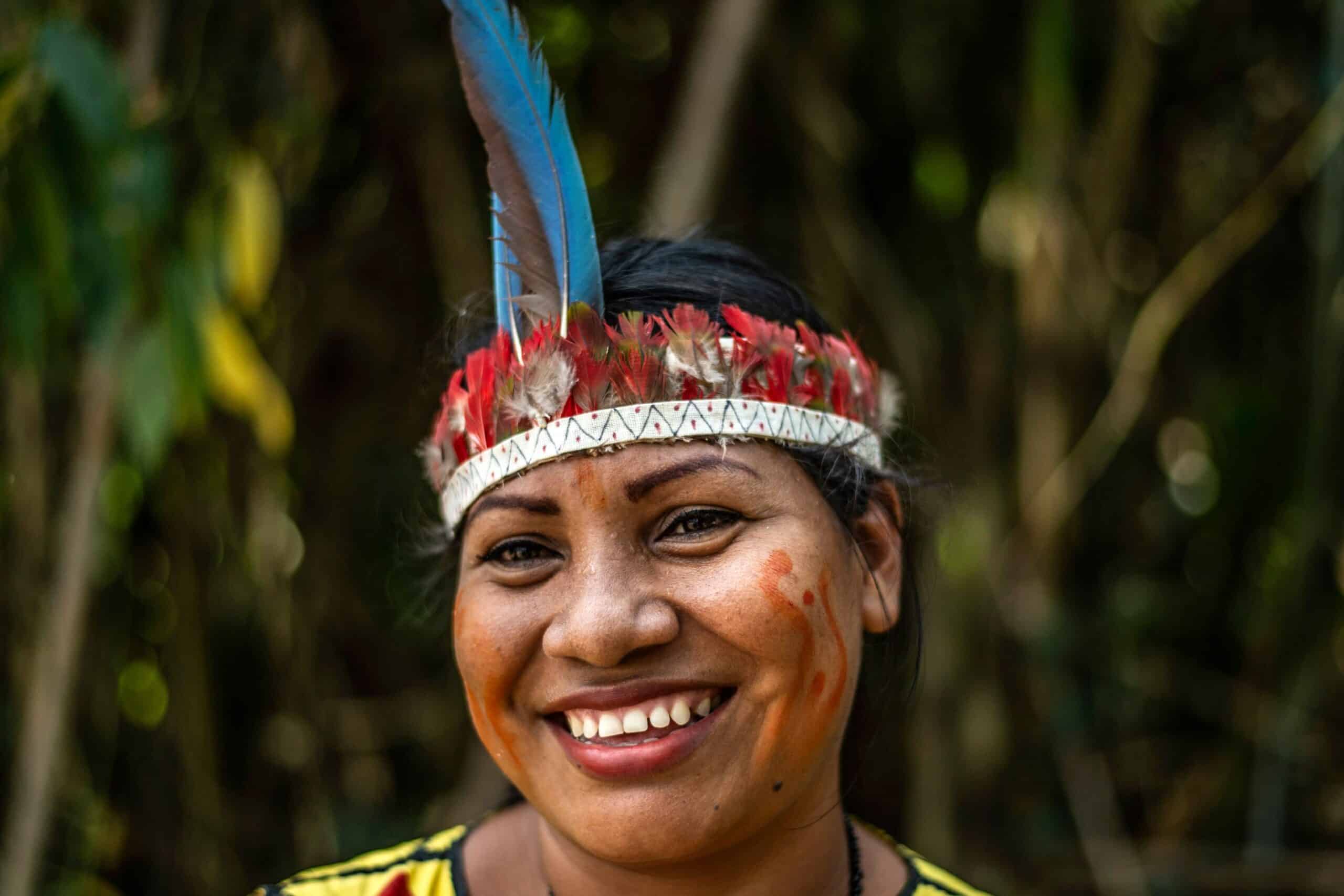Indigenous Peruvians Use Their Smart Phones and Satellite Data to Protect the Amazon Rainforest From Deforestation
Photo via Getty Images
The Amazon rainforest is experiencing a deforestation crisis. Each year, criminals illegally clear thousands of acres of trees. They clear trees for various reasons. Illegal goldmining, logging, and of course, drug traffickers clearing trees to plant coca crops for cocaine. But in Peru, Indigenous communities are combatting illegal deforestation through…their smart phones.
Starting in 2018, researchers equipped almost 40 Indigenous Peruvian communities with apps on their smartphones to monitor nearby deforestation.

“The forest has been very hard-hit by drug trafficking,” said leader of the Indigenous Ticuna people, Francisco Hernandez, to the Thomson Reuters Foundation. “Technology has helped us a lot to collect precise information about where deforestation is happening that gives exact coordinates about illegal activity taking place, which is then passed to judicial authorities.”
The program’s strategy was simple. Through satellite images, environmental researchers monitored Amazon tree cover loss. Once a month, couriers would sail the Amazon River and deliver the data to the indigenous locals via USB. Locals would then download the data onto their smartphone apps and would check those specific areas for illegal deforestation. If they confirmed illegal activity, they then alerted the authorities.
The program was an undeniable success. In the communities that electronically monitored deforestation, tree cover loss fell by 52%.

The success of the program in Peru gives hope to other South American areas that are suffering from deforestation. “Should our results hold up elsewhere, they would suggest that similar community-based monitoring programs implemented by Indigenous peoples across the Amazon can help contribute to sustainable forest management on a larger scale,” said attorney and co-author of the study Jacob Kopas.
The results of the study are not surprising to many indigenous environmental activists who have long seen the relationship between their communities and nature. As Vox wrote in an in-depth report about indigenous environmental activists: “Indigenous people are the world’s biggest conservationists, but they rarely get credit for it.”
Since time immemorial, indigenous communities have had a symbiotic, give-and-take relationship with the land they live on.

“We see ourselves as part of [nature] because it’s life-sustaining,” said Aaron Payment, a chairperson of the Sault Tribe of Chippewa Indians in Michigan, to Vox. “Our very lives depend on living in ecological balance with our natural resources.”
Experts estimate that Indigenous peoples and local communities conserve 21% of the earth’s land. That is far more than the 14% of land that national parks and forests conserve. However, the modern conservationist movement often overlooks the achievements of indigenous communities.
“We’re discounted. Tribal knowledge in land conservation is often used and quoted but rarely matters until a white person says it,” explained Reno Keoni Franklin, chairman emeritus of the Kashia Pomo Tribe in California, to Vox.




